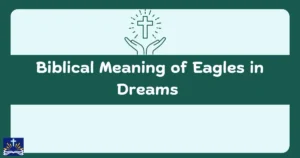Uncover the fascinating position and meaning of the middle verse in the Bible.
The Bible, a sacred text for millions around the world, is filled with wisdom, history, and profound teachings. It is divided into chapters and verses, each serving a unique purpose in delivering spiritual messages. But have you ever wondered about the middle verse of the Bible? This seemingly simple concept has sparked curiosity for centuries. Understanding where it lies and why it’s important can offer deeper insights into the structure of this holy book.
When we talk about the “middle verse” of the Bible, many may assume it refers to a random verse in the middle of the text. However, the positioning and significance of this verse go beyond just its location. Some may find it surprising that the Bible’s middle verse is not the middle verse in every version or translation. This discrepancy highlights the variations found across different Bible versions, each carrying its unique arrangement of words and verses.
In this article, we will dive deep into the concept of the middle verse of the Bible. We’ll discuss its position within the text, its meaning, and how different Bible versions affect its placement. We’ll also explore key elements like the importance of Psalms 118, which plays a significant role in this discussion. By the end, you’ll have a clearer understanding of this intriguing aspect of the Bible and how it adds to the richness of its structure and meaning.
Understanding the Structure of the Bible
The Bible is not just a book; it’s a collection of ancient texts that span over centuries. It’s divided into two main sections: the Old Testament and the New Testament, which together contain a total of 66 books (in Protestant versions). These books are further divided into chapters and verses, making it easier for readers to navigate and locate specific passages.
The Old Testament covers the history, laws, prophecies, and teachings of the Jewish people, while the New Testament focuses on the life and teachings of Jesus Christ and the early Christian church. The entire Bible, regardless of the version, is meticulously structured to preserve its message, yet it contains variations across different translations and editions.
Understanding the Bible’s structure is essential when discussing concepts like the middle verse. The arrangement of chapters and verses is not arbitrary. It was designed to facilitate memorization and study. The chapter divisions were introduced in the 13th century by Stephen Langton, and the verse divisions came later in the 16th century by Robert Estienne. These changes helped make the Bible more accessible but also influenced the placement of certain verses, including the middle one.
Determining the Middle Verse of the Bible
When you search for the middle verse of the Bible, you may find that it depends on which Bible version you refer to. In many Christian translations, there are exactly 1,189 chapters in the Bible, but the number of verses varies slightly between different versions. As a result, the middle verse can be calculated differently.
In the King James Version (KJV), the middle verse is found in Psalms 118:8. This verse states, “It is better to trust in the Lord than to put confidence in man.” This verse is powerful because it emphasizes trust in God over human reliance, aligning well with the Bible’s overall themes of faith and divine guidance.

However, in other Bible translations, like the New International Version (NIV) or the New Revised Standard Version (NRSV), the middle verse may differ slightly due to variations in the number of verses and the way the chapters are divided. Regardless of the version, though, the middle verse holds significant spiritual meaning.
What is the Longest Chapter in the Bible?
Variations in Bible Versions
The middle verse of the Bible changes slightly depending on the Bible translation or version. As mentioned earlier, the KJV places Psalm 118:8 as the middle verse, but other versions, such as the NIV and NRSV, might place different verses in the middle due to the different way verses are counted.
The variations arise because of differences in translation choices, manuscript traditions, and the inclusion or exclusion of certain verses, such as footnotes or additional passages that may not appear in all versions. Some translations might combine or separate verses differently, influencing the total verse count.
These variations do not affect the core message of the Bible, but they highlight the importance of understanding the specific Bible version you’re reading. If you’re studying the middle verse, it’s crucial to know which version you’re referring to, as the middle verse could change depending on the version’s verse count.
The Role of Psalms 118
Psalm 118 is a significant chapter in the Bible, and it holds the middle verse in many versions. It’s often considered a psalm of thanksgiving and praise to God, celebrating His enduring mercy and faithfulness. This chapter also serves as a reminder of the importance of trusting in God rather than relying on human strength or wisdom.
One of the most notable aspects of Psalm 118 is verse 8, which is often highlighted as the central verse in the Bible:
“It is better to trust in the Lord than to put confidence in man.”
This verse encapsulates a core theme of the Bible—the importance of putting one’s faith in God above all else. As the middle verse in the KJV, it serves as a powerful message to believers, reminding them that human trust is fleeting, but God’s faithfulness is eternal.
Another verse in Psalm 118 that holds particular significance is Psalm 118:24, which states:
“This is the day which the Lord hath made; we will rejoice and be glad in it.”
This verse encourages believers to rejoice and be grateful for each day that the Lord has made. It underscores the importance of gratitude and trust in God’s plan.
Exploring Chapters and Verses: From the Longest Chapter to the Middle Verse
The Bible is not just a collection of random verses and chapters. It’s a carefully crafted text, where each chapter and verse plays a vital role in the larger narrative. Some chapters are notably longer than others, while some are shorter, but all contribute to the message of the Bible.
The longest chapter in the Bible is Psalm 119, which contains 176 verses. It’s a chapter focused entirely on the importance of God’s Word and its role in guiding the believer’s life. In contrast, the shortest chapter in the Bible is Psalm 117, with only two verses.
As you navigate the Bible, it’s important to understand the context of each chapter and verse, including the middle verse. The middle verse is not just a random line; it reflects the larger themes of the Bible, such as trust, faith, and reliance on God.

The Significance of the Middle Verse
The middle verse of the Bible, whether in the KJV or another translation, is often seen as symbolically significant. It’s believed by many scholars and readers that the middle verse highlights a central theme of the Bible. In the KJV, Psalm 118:8 serves as a reminder to trust in God above all else, which is a core message throughout the entire Bible.
Moreover, the central location of this verse within the Bible’s structure also suggests its importance. The middle verse can be seen as a focal point that reflects the balance of the entire Bible: God’s sovereignty, His faithfulness, and the call to trust Him over human understanding.
The choice of Psalm 118:8 as the middle verse may not be coincidental. It emphasizes a powerful spiritual truth that resonates with readers and believers alike. In this way, the middle verse serves as a microcosm of the Bible’s overall message.
What Does the Middle Verse Teach Us?
The middle verse, Psalm 118:8, teaches us an important lesson about trust. It emphasizes that, while human beings often place confidence in their own abilities or other people, the ultimate trust should always lie in God. This verse reminds believers to rely on divine wisdom rather than the fleeting nature of human understanding.
In addition, the middle verse highlights the importance of faith. By choosing this verse as the central point of the Bible, the text reminds readers that faith in God is essential for spiritual growth and a fulfilling relationship with Him. Trust in God is a theme that is reiterated throughout the Bible, making this verse a key message for believers.
Key Insight
1. What is the middle verse of the Bible? The middle verse of the Bible in the KJV is Psalm 118:8, which says, “It is better to trust in the Lord than to put confidence in man.”
2. Does the middle verse change across Bible versions? Yes, the middle verse can differ slightly depending on the Bible version due to variations in verse numbering and chapter divisions.
3. Why is Psalm 118:8 significant? Psalm 118:8 is significant because it highlights the importance of trusting in God rather than in human wisdom, reflecting a core message of the Bible.
4. How does the middle verse reflect the Bible’s themes? The middle verse, Psalm 118:8, reflects the Bible’s broader themes of faith, trust, and reliance on God’s wisdom above human understanding.
5. Can the middle verse be used in spiritual reflections? Yes, Psalm 118:8 can serve as a powerful reminder to trust in God’s guidance and wisdom, making it an excellent verse for reflection and meditation.
Conclusion
The middle verse of the Bible, Psalm 118:8, is not just an arbitrary verse located in the middle of the text. It holds deep significance, reinforcing the Bible’s core themes of trust and faith in God. Whether you are reading the King James Version or another translation, this verse invites readers to place their confidence in God above all else.
As the center of the Bible, it offers a reminder of the spiritual wisdom found throughout the entire text. Understanding its position and meaning can deepen your appreciation for the Bible’s structure and its message of divine trust and guidance.

Hi! I’m Ethan Matthews, a tech enthusiast and avid traveler, sharing insights and adventures from my journeys around the globe.










